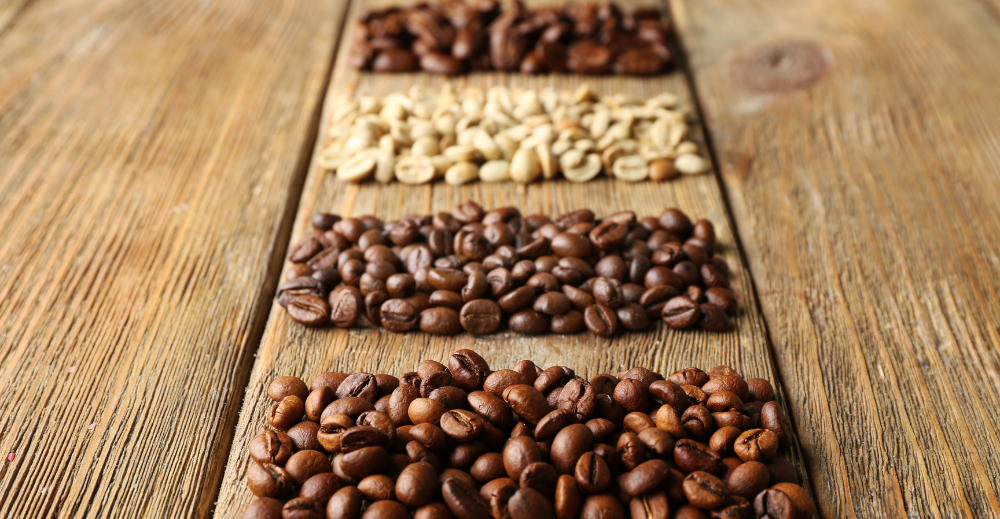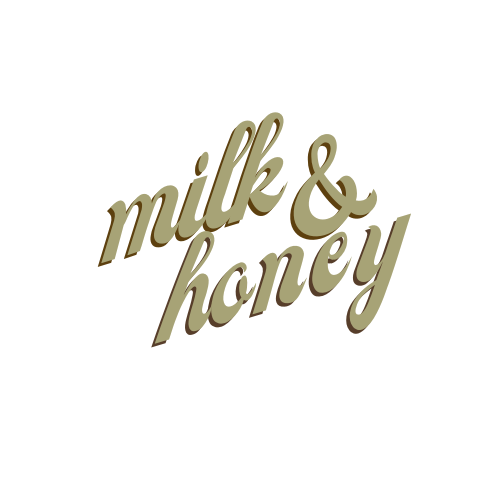
How to Choose the Right Coffee Roast for Your Taste Buds
Share
TLDR;
The right coffee roast depends on how you like your coffee to taste. If you prefer bright and fruity notes, go for a light roast. For balanced and smooth flavor, choose medium. If you like bold, smoky, and full-bodied coffee, a dark roast is your best match.
Why Choosing the Right Coffee Roast Matters

Your coffee’s flavor depends more on the roast than you might think. The roast level determines aroma, acidity, body, and intensity. At Milk & Honey Coffee Co., we help people understand how roast level shapes every sip. A well-matched roast brings out the best in both the beans and your personal preferences.
Understanding Coffee Roast Levels

Roasting transforms raw green beans into flavorful coffee. The longer beans roast, the darker they get. Here’s a breakdown of the main roast levels:
Light Roast
-
Color: Light brown with no surface oil
-
Flavor: Bright, fruity, floral
-
Acidity: High
-
Body: Light
-
Caffeine: Slightly higher by weight
-
Best for: Black coffee drinkers who enjoy vibrant and delicate flavors
Medium Roast
-
Color: Medium brown, little to no oil
-
Flavor: Balanced, nutty, chocolatey
-
Acidity: Moderate
-
Body: Medium
-
Best for: Those who like both clarity and depth
Medium-Dark Roast
-
Color: Darker brown, slight sheen of oil
-
Flavor: Caramel, toasted nuts, mild smoke
-
Acidity: Low
-
Body: Full
-
Best for: Drip and French press drinkers who enjoy a richer profile
Dark Roast
-
Color: Deep brown or almost black, shiny surface
-
Flavor: Bold, smoky, bittersweet
-
Acidity: Very low
-
Body: Heavy
-
Best for: Espresso, lattes, and anyone who enjoys intense, roasted flavor
Caffeine and Oil Comparison Table
|
Roast Level |
Acidity |
Body |
Caffeine Content |
Surface Oil |
|
Light |
High |
Light |
Higher by weight |
None |
|
Medium |
Balanced |
Medium |
Moderate |
Slight |
|
Medium-Dark |
Low |
Full |
Moderate |
Visible |
|
Dark |
Very low |
Heavy |
Slightly less by weight |
Oily |
How to Assess Your Taste Preferences

Your taste buds are the key to choosing the right roast. Think about how you describe flavors you enjoy.
Ask yourself:
-
Do you like fruity or chocolatey flavors?
-
Do you prefer bright acidity or a smooth finish?
-
Do you drink coffee black or add milk and sugar?
-
Do you enjoy a crisp, refreshing brew or a rich, comforting cup?
If you like:
-
Citrus, berries, or floral notes → Light roast
-
Chocolate, nuts, or caramel → Medium roast
-
Smoky, earthy, or spicy flavors → Dark roast
If you usually add milk or cream, darker roasts hold up better. If you drink coffee black, lighter roasts let you experience the bean’s origin more clearly.
Coffee Roast Choice for Flavour Preferences

Each roast level influences the balance of acidity, sweetness, and bitterness. Light roasts highlight origin flavors such as citrus or jasmine. Medium roasts develop more caramelized sugar notes. Dark roasts emphasize roast flavor over bean character.
A simple rule:
-
Choose light if you like fruit and brightness.
-
Choose medium if you want balance and sweetness.
-
Choose dark if you crave richness and boldness.
Flavor is personal. The best roast is the one that satisfies your palate every morning.
Match Your Roast Level with Brewing Method

Brewing method affects how roast flavors appear in your cup. Choosing the right roast for your brew style makes a noticeable difference.
Pour Over or AeroPress
-
Best with light or medium roasts
-
Highlights delicate notes and aroma
Drip Coffee Maker
-
Works well with medium roasts
-
Delivers balance and consistency
French Press
-
Ideal for medium-dark roasts
-
Produces a full-bodied, smooth cup
Espresso or Moka Pot
-
Suits dark roasts
-
Strong, bold flavor that pairs well with milk
Cold Brew
-
Great with medium or medium-dark roasts
-
Smooth, low-acid flavor with chocolate tones
Common Mistakes to Avoid
-
Using light roast for espresso often leads to sour flavor.
-
Choosing dark roast for pour over can hide subtle aromas.
-
Ignoring grind size and water temperature can ruin extraction.
Small adjustments matter. At Milk & Honey Coffee Co., we encourage customers to test different roast and brew pairings to find their ideal combination.
Coffee Bean Origin and Roast Interaction

Bean origin and roast level work together. Lighter roasts preserve origin-specific notes, while darker roasts create consistency and strength.
Examples:
-
Ethiopian Beans
-
Light roast: floral, blueberry, citrus
-
Dark roast: cocoa, spice
-
Light roast: floral, blueberry, citrus
-
Colombian Beans
-
Medium roast: nutty, balanced
-
Dark roast: bold, caramel
-
Medium roast: nutty, balanced
-
Sumatran Beans
-
Medium-dark roast: earthy, spicy, deep body
-
Medium-dark roast: earthy, spicy, deep body
Roast can either showcase the origin’s unique traits or mute them. Knowing your preferred flavor helps you select beans and roast together for harmony.
Brewing Method and Roast Level Connection

Your brew method amplifies certain roast qualities. Matching both correctly enhances your experience.
Light Roast Pairings
-
Suits pour over or drip
-
Shows off bright acidity and fruitiness
Medium Roast Pairings
-
Ideal for drip, AeroPress, or cold brew
-
Creates balance and sweetness
Dark Roast Pairings
-
Best for espresso or French press
-
Delivers depth and richness
Consistency comes from repetition. Once you find a combination you enjoy, stick with it for a while before changing variables.
Roast Freshness and Storage Tips

Roast date affects flavor more than most people think. Coffee bean freshness plays a huge role in maintaining aroma and vibrancy, especially within the first few weeks after roasting.
Tips for freshness:
-
Always check roast date before buying
-
Store beans in an airtight container away from light and moisture
-
Grind only what you need before brewing
-
Avoid refrigeration, which introduces humidity
Freshness equals flavor. Milk & Honey Coffee Co. recommends buying smaller batches more often instead of large bags that sit for months.
Practical Steps to Choose and Buy the Right Roast

Follow these simple steps to make confident roast choices:
-
Identify what flavor you like most
-
Pick roast level that matches your taste preference
-
Match it with your brew method
-
Choose coffee origins that align with your desired profile
-
Check the roast date and freshness
-
Store beans properly
-
Experiment and take notes
Start small by trying different roasts of the same origin. Taste the differences and decide what satisfies your palate most.
Tasting and Experimentation

The best way to learn is to taste. Conduct your own side-by-side comparisons.
How to taste:
-
Brew small samples of each roast level
-
Smell the aroma before sipping
-
Notice acidity, body, sweetness, and aftertaste
-
Record impressions to refine your preferences
Pay attention to aftertaste and mouthfeel. Light roasts often leave a clean finish. Dark roasts linger with deep smokiness. Over time, you will recognize subtle changes that guide your decisions.
Common Coffee Roast Myths

Myth 1: Dark roast has more caffeine
False. Lighter roasts usually retain slightly more caffeine by weight because roasting burns off some content.
Myth 2: Dark roasts are burnt coffee
Not true. Quality dark roasts are intentionally roasted longer for flavor depth, not burnt.
Myth 3: Light roasts are weak
Incorrect. Light roasts often have higher acidity and intense flavor clarity.
Myth 4: Only espresso uses dark roast
Espresso works with many roast levels; it depends on your taste preference and extraction balance.
Understanding the facts helps you buy smarter and appreciate the differences each roast offers.
Finding Your Ideal Coffee Experience

Choosing the right coffee roast is about balance between your taste, brewing method, and bean origin. Light roasts express nuance. Medium roasts create harmony. Dark roasts provide comfort and strength.
At Milk & Honey Coffee Co., we believe your coffee experience should be personal and rewarding. Start with your taste buds, match your method, and explore new origins until you find your perfect cup.
Each roast tells a story. The one that fits your palate best is the story worth drinking every day.
